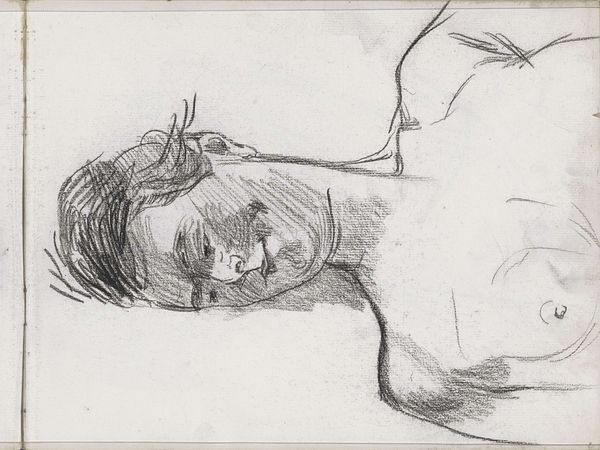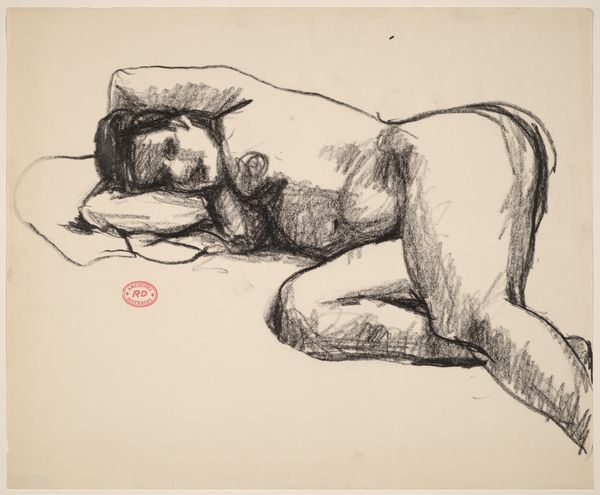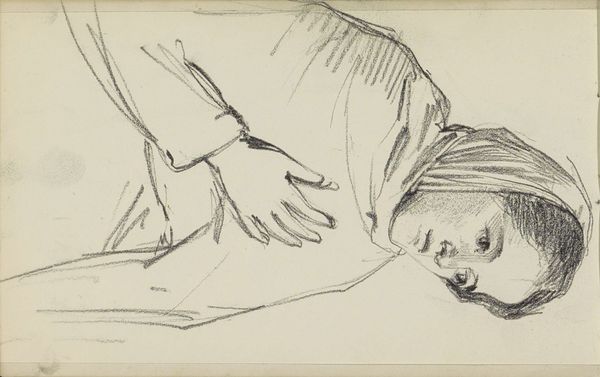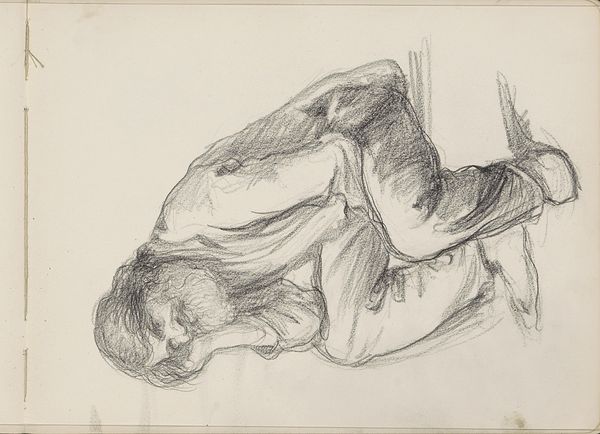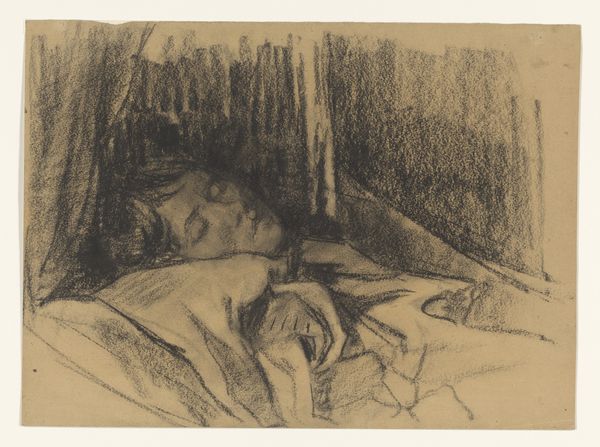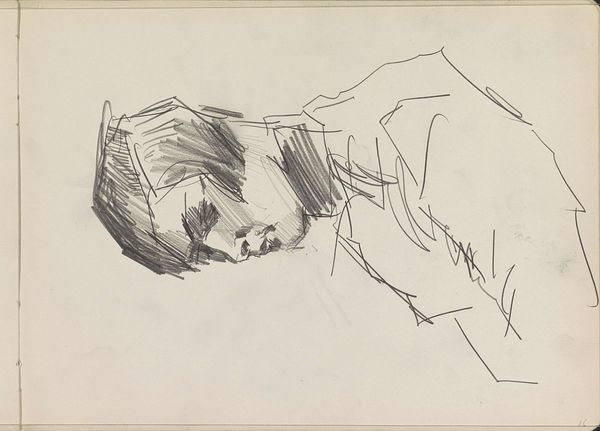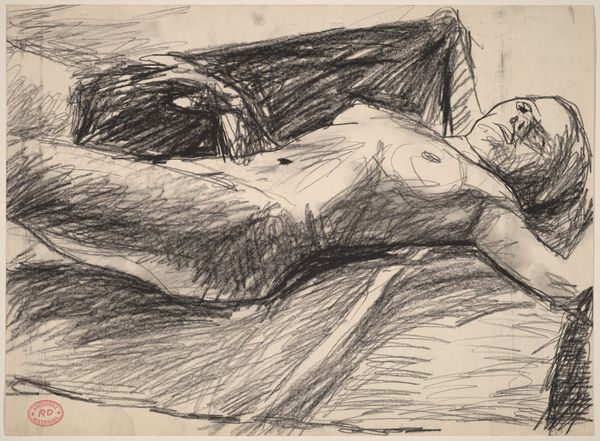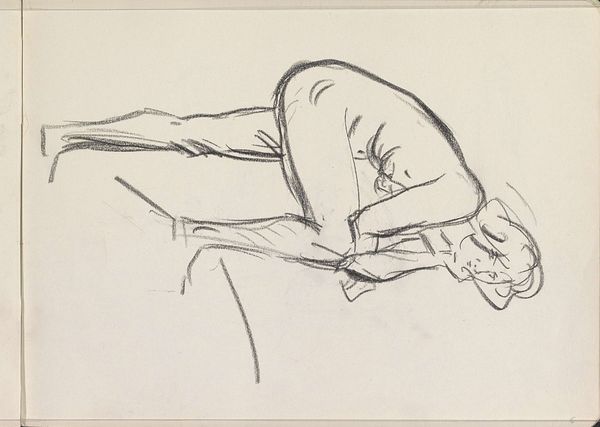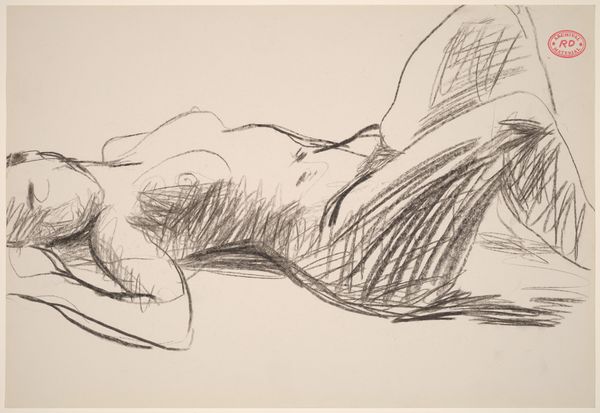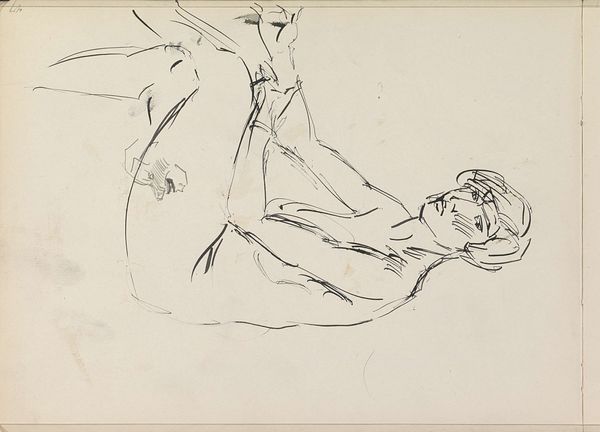![Untitled [female nude lying on her back with arms behind head] by Richard Diebenkorn](/_next/image?url=https%3A%2F%2Fd2w8kbdekdi1gv.cloudfront.net%2FeyJidWNrZXQiOiAiYXJ0ZXJhLWltYWdlcy1idWNrZXQiLCAia2V5IjogImFydHdvcmtzLzkyMzk1YmM2LWI5NWYtNDRhYS04ZDdlLWQ3OGM5ZDgyYjc0Ny85MjM5NWJjNi1iOTVmLTQ0YWEtOGQ3ZS1kNzhjOWQ4MmI3NDdfZnVsbC5qcGciLCAiZWRpdHMiOiB7InJlc2l6ZSI6IHsid2lkdGgiOiAxOTIwLCAiaGVpZ2h0IjogMTkyMCwgImZpdCI6ICJpbnNpZGUifX19&w=3840&q=75)
Untitled [female nude lying on her back with arms behind head] 1955 - 1967
0:00
0:00
drawing, pencil
#
portrait
#
drawing
#
figuration
#
bay-area-figurative-movement
#
pencil drawing
#
pencil
#
portrait drawing
#
academic-art
#
nude
#
modernism
Dimensions: overall: 27.9 x 43.2 cm (11 x 17 in.)
Copyright: National Gallery of Art: CC0 1.0
Curator: Here we have Richard Diebenkorn's "Untitled [female nude lying on her back with arms behind head]", a pencil drawing created sometime between 1955 and 1967. The work offers a stark, intimate view of the figure. What's your first impression? Editor: It's very gestural, almost urgent. The strokes feel deliberate, but there's also a raw energy to the application of graphite on paper. Look at the marks making up the shadows. You can sense the artist's hand at work. Curator: Yes, Diebenkorn seems interested in the direct translation of seeing onto the page. As a draughtsman, Diebenkorn used drawing, here in simple pencil, as a mode of thinking through his relation with the seen world. His marks aren't purely descriptive; the nude exists because of those repeated, accumulating lines. It also emphasizes the economy of materials—paper, graphite, the hand. Editor: And that choice, or perhaps acceptance, of simplicity reinforces the image’s vulnerable feel. There’s a history of the reclining nude in Western art, of course, but its origins are traditionally lush and opulent. Here, that archetype is pared down, even questioning the grand tradition it seems to subtly invoke. Curator: Indeed. There is a lack of idealization in the work; the nude does not cater to some aesthetic fantasy. Her slightly awkward, relaxed pose communicates a real person, and you feel he worked quickly to record an experience in a real place with the model. The linear hatching both builds and dissolves the figure's presence on the support. Editor: Which allows a space for emotional projection, doesn’t it? I find her peaceful, maybe resigned. She might represent any body and every body that relaxes and lies down at the end of a day. In that sense, it becomes universally symbolic. Curator: I agree, although what is recorded also testifies to its production—of artist and model present, working within their material and their time, co-creating both the image and, perhaps, the viewer’s response. Editor: A potent and quiet union there in graphite, paper, history and the embodied human form! Curator: Definitely, an apt reminder of the potent narratives interwoven in the most ostensibly simple compositions.
Comments
No comments
Be the first to comment and join the conversation on the ultimate creative platform.

